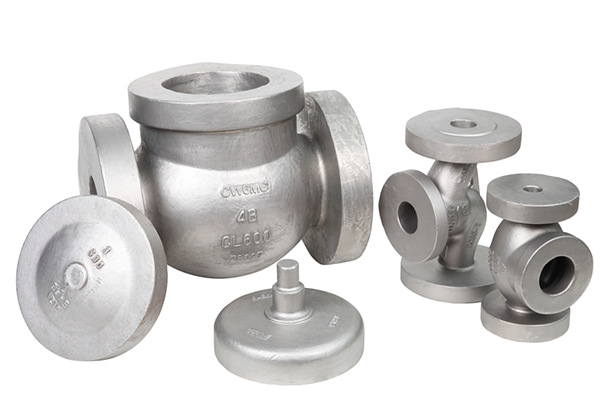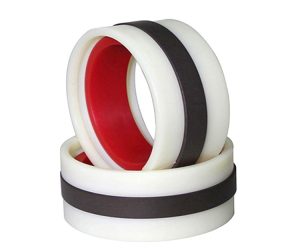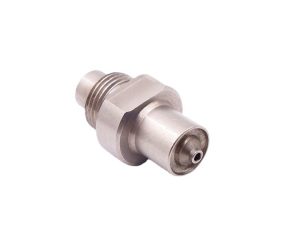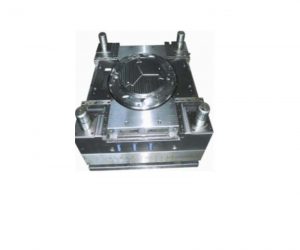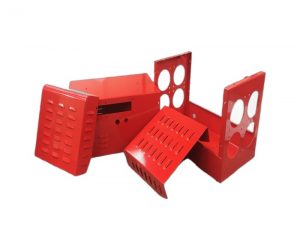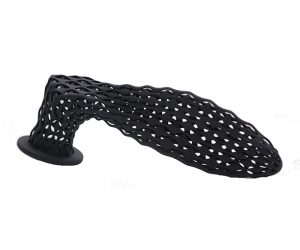1. Unveiling SLM Rapid Prototyping: The Precision Powerhouse
1.1 Defining Selective Laser Melting (SLM)
Selective Laser Melting (SLM) is a cutting-edge additive manufacturing technology that leverages high-power lasers to fully melt and fuse metallic powders—such as stainless steel, titanium, or aluminum—layer by layer, creating dense, near-net-shape components with intricate geometries. Unlike its predecessor, Selective Laser Sintering (SLS), which sinters powders at sub-melting temperatures, SLM achieves full material fusion, resulting in parts with mechanical properties comparable to traditionally forged or machined metals (up to 99% density and tensile strength). This technology bridges the gap between rapid prototyping and functional part production, enabling engineers to transform CAD models into high-strength prototypes in hours, rather than weeks.
1.2 Core Mechanisms and Technological Advantages
- Laser-Powder Interaction: SLM employs lasers with energy densities exceeding 10⁶ W/cm² to melt powder particles, forming a metallurgical bond between layers. Layer thickness typically ranges from 20–100 microns, allowing for precision in both macro-structures (e.g., aerospace brackets) and micro-features (e.g., medical implant textures).
- Material Versatility: From corrosion-resistant Inconel 718 for aerospace to biocompatible Ti-6Al-4V for medical devices, SLM supports over 50 metal alloys, each optimized for specific applications through parameter tuning (e.g., laser power, scan speed, and inert gas environment to prevent oxidation).
The following Yigu Technology table summarizes the key differences between SLM and traditional manufacturing methods in terms of material utilization and production time for a sample part production:
| Manufacturing Method | Material Utilization | Production Time for a Complex Part |
| SLM | Up to 90% (recyclable powder) | 24 - 48 hours |
| Traditional Machining | 30 - 50% (high waste) | 1 - 2 weeks |
2. SLM vs. Traditional Manufacturing: A Paradigm of Speed and Precision
2.1 Comparative Analysis: Key Metrics for Modern Production
In the quest for manufacturing excellence, SLM stands as a disruptive force when compared to traditional manufacturing methods. A detailed breakdown reveals its transformative potential across multiple key metrics:
| Metrics | Traditional Manufacturing | SLM Rapid Prototyping |
| Geometric Complexity | Limited by tool accessibility (e.g., deep cavities, internal channels) | Unrestricted (supports lattice structures, organic shapes, and multi-material integration) |
| Material Utilization | 30–50% (significant waste from milling) | 90–95% (additive layer-by-layer deposition) |
| Production Time | 4–8 weeks (multi-step machining, heat treatment) | 24–72 hours (direct digital fabrication, minimal post-processing) |
| Tensile Strength (MPa) | 600–800 (dependent on alloy and heat treatment) | 800–1,200 (dense microstructure from full melting) |
| Initial Setup Cost | \(10,000–\)50,000 (tooling, setup costs) | \(2,000–\)15,000 (no custom tooling, automated workflow) |
2.2 Disruptive Advantages Reshaping Prototyping
2.2.1 Design Freedom Without Compromise
Traditional machining techniques are severely hampered by the limitations of physical tools. Creating complex internal structures, such as intricate cooling channels in injection molds or lattice - structured components for weight - reduction, is a formidable challenge. These methods often require multiple setups, specialized tooling, and a high degree of manual intervention, which not only increases production time but also limits the complexity of the final design.
SLM, on the other hand, obliterates these constraints. It operates on a layer - by - layer deposition principle, enabling the creation of geometries that were once deemed impossible to manufacture. A prime example of this is Tesla's use of SLM in the production of aluminum alloy motor brackets. By integrating coolant pathways within the bracket, Tesla achieved a 25% reduction in weight. This weight reduction not only contributes to better energy efficiency in the vehicle but also improves overall performance. Additionally, the heat dissipation efficiency of the motor brackets was increased by 40%. Such a significant improvement in thermal management is crucial for the long - term reliability and performance of electric vehicle motors. Achieving these results with traditional CNC milling would have been virtually impossible due to the inability to create such complex internal channels without extensive post - processing and assembly.
2.2.2 Rapid Iteration for Functional Validation
In industries where the cost of failure is exorbitant, such as aerospace, the ability to rapidly iterate on designs is a game - changer. Traditional manufacturing processes involve multiple steps, including machining, heat treatment, and quality control, which can take weeks to complete. Each design change requires the modification of tooling, re - programming of machines, and often a complete overhaul of the production process, making the iteration cycle slow and costly.
SLM revolutionizes this process by enabling direct digital fabrication. Engineers can make design changes in the CAD model and have a new prototype ready for testing within a matter of hours. Boeing's experience with the 787 Dreamliner is a testament to the power of SLM in rapid iteration. When prototyping a titanium alloy wing rib, Boeing was able to reduce the design iteration time from a staggering 12 weeks to just 5 days using SLM. This not only accelerated the development process but also allowed for more comprehensive testing. The SLM - produced rib passed fatigue tests at 1.5 times the expected service load, which provided Boeing with the confidence to move forward with the design more quickly. As a result, the certification process for the wing rib was accelerated by 2 months, saving Boeing significant time and resources in bringing the 787 Dreamliner to market.
3. Transforming Industries: SLM in Action
3.1 Aerospace & Defense: Lightweight Strength for Critical Applications
3.1.1 Engine Component Prototyping
In the aerospace sector, the demand for high - performance components with enhanced fuel efficiency and reduced weight is relentless. General Electric (GE) has been at the forefront of leveraging SLM technology for this purpose. When developing fuel nozzles for its LEAP engines, GE opted for SLM with Inconel 718, a nickel - chromium - based superalloy renowned for its high - temperature strength and corrosion resistance.
Traditional investment casting, while a long - standing method in the industry, has significant limitations. It involves creating a wax pattern, coating it with a ceramic shell, melting out the wax, and then filling the mold with molten metal. This process is not only time - consuming but also results in substantial material waste. In contrast, SLM builds the fuel nozzle layer by layer directly from the metal powder. This additive approach reduces material waste by a staggering 70%.
The internal geometries achievable with Yigu Technology SLM are another game - changer. The fuel nozzles produced via SLM have intricate internal channels that promote better fuel atomization. When fuel is atomized more effectively, it mixes more uniformly with air in the combustion chamber, leading to more efficient combustion. As a result, the engine's efficiency is boosted by 15%. This increase in efficiency not only reduces fuel consumption but also lowers emissions, making the LEAP engines more environmentally friendly.
Moreover, the on - demand production capability of SLM is a boon for the aerospace industry. For legacy aircraft, maintaining a large inventory of spare parts is costly. With SLM, GE can produce spare fuel nozzles on - demand, cutting inventory costs by 30%. This just - in - time production model not only saves money but also ensures that the parts are available when needed, reducing aircraft downtime.
3.1.2 Defense and Space Exploration
Lockheed Martin, a giant in the defense and aerospace industries, has also recognized the potential of SLM. When creating brackets for missile systems, they used titanium alloy and SLM technology. By consolidating multiple parts into a single, complex - shaped component through SLM, Lockheed Martin achieved a 50% reduction in part count. Fewer parts mean fewer points of failure, increased structural integrity, and reduced assembly time. This is crucial in missile systems, where reliability and speed of deployment are of utmost importance.
In the realm of space exploration, Relativity Space has taken SLM to new heights. Their Terran 1 rocket is a testament to the disruptive power of this technology. Approximately 85% of the Terran 1 rocket’s components are 3D - printed via SLM, including the Aeon 1 engine. The combustion chamber of the Aeon 1 engine, when produced with traditional methods, would require over 100 welded parts. Welding multiple parts together is not only time - consuming but also introduces potential weak points due to the welding process. With SLM, the combustion chamber is produced as a single piece. This not only simplifies the manufacturing process but also improves the performance and reliability of the engine. The single - piece construction can better withstand the extreme pressures and temperatures experienced during rocket launches, increasing the overall safety and success rate of space missions.
3.2 Automotive: Accelerating Innovation in Electric Vehicles (EVs)
3.2.1 Lightweighting for Range Optimization
In the rapidly evolving landscape of electric vehicles (EVs), one of the most pressing challenges is maximizing range. The weight of the vehicle plays a crucial role in determining how far an EV can travel on a single charge. EV manufacturers like Tesla and Rivian have turned to SLM to address this issue.
They use SLM to prototype aluminum - silicon alloy battery enclosures with lattice - reinforced structures. Lattice structures are a type of lightweight, porous architecture that can provide high strength - to - weight ratios. By incorporating these lattice structures into the battery enclosures, Tesla and Rivian have been able to reduce the weight of the enclosures by 20%. This weight reduction directly contributes to an increase in the vehicle's range. Additionally, the lattice - reinforced structures also enhance the impact resistance of the battery enclosures. In the event of a collision, the lattice structures can absorb and dissipate energy more effectively, protecting the batteries inside.
A 2023 study by Deloitte further highlights the cost - effectiveness of SLM in EV component prototyping. The study found that SLM reduces EV component prototyping costs by 40% compared to die - casting. Die - casting involves injecting molten metal into a mold under high pressure, which requires expensive tooling and high - volume production to be cost - effective. SLM, on the other hand, eliminates the need for custom tooling and can produce components in small batches at a lower cost. This cost reduction enables faster validation of safety - critical parts like crash absorbers. Engineers can quickly iterate on designs, produce prototypes, and test them for safety and performance, accelerating the development process of EVs.
3.2.2 Customized Tooling and Jigs
For low - volume production runs, such as limited - edition vehicles or prototypes, the ability to rapidly produce customized tooling and jigs is invaluable. BMW, a leading automotive manufacturer, has experienced the benefits of SLM in this regard. When producing the i3 electric car, BMW needed a welding jig for a specific stainless - steel component.
With traditional machining methods, creating the welding jig would have taken 8 weeks. This long lead time is due to the multiple steps involved in machining, including design, programming, and cutting the metal. In contrast, using SLM, BMW was able to produce the welding jig in just 3 days. The design was directly transferred from the CAD model to the SLM machine, and the jig was built layer by layer. This not only reduced the lead time but also cut the cost by 30%. The cost reduction is mainly due to the elimination of the need for expensive machining tools and the ability to produce the jig in - house without outsourcing. The rapid production of customized tooling and jigs using SLM allows automakers to be more agile in their production processes, quickly adapting to changes in design or production requirements.
3.3 Medical Devices: Personalization at Scale
3.3.1 Patient - Specific Implants
In the medical field, the ability to create patient - specific implants is revolutionizing the way surgeries are performed. Stryker, a well - known medical device company, uses SLM to fabricate titanium alloy hip and knee implants directly from patient CT scans.
The process begins with a CT scan of the patient's joint, which provides detailed 3D data of the anatomy. This data is then used to create a customized CAD model of the implant. The SLM machine then builds the implant layer by layer from titanium alloy powder. The resulting implants have porous surfaces, which are crucial for osseointegration, the process by which the implant fuses with the patient's bone. The porous surfaces allow bone cells to grow into the implant, increasing its stability over time. Additionally, the complex geometries of the implants can be precisely tailored to match the individual anatomy of the patient. This personalized fit reduces the need for extensive bone removal during surgery and improves the overall outcome. A 2022 report by the American Medical Association noted that SLM - based implants show a 15% lower revision rate compared to traditionally manufactured ones. This means that patients with SLM - based implants are less likely to require additional surgeries to replace or adjust the implant, reducing both the patient's discomfort and healthcare costs.
3.3.2 Surgical Instruments
In minimally invasive surgery, the precision of the surgical instruments is of utmost importance. Olympus, a leading medical equipment manufacturer, employs SLM to prototype stainless - steel endoscopic forceps with micro - hinges and textured grips.
The micro - hinges on the endoscopic forceps are designed to provide precise control during delicate procedures. With SLM, Olympus can create hinges with a positional accuracy of 0.05mm. This high level of precision allows surgeons to perform procedures with greater confidence, reducing the risk of damage to surrounding tissues. The textured grips on the forceps also enhance the surgeon's tactile feedback, improving handling and control.
The use of SLM in prototyping surgical instruments also significantly reduces the development cycle. Traditionally, developing a new surgical instrument could take up to 18 months. This long development time is due to the complex manufacturing processes involved, including machining, tooling, and testing. With SLM, Olympus has been able to reduce the instrument development cycle to just 6 months. This acceleration in development time allows innovative surgical tools to reach the market faster, improving patient care and outcomes.
4. Conclusion
Yigu Technology SLM Rapid Prototyping is not just a tool for making prototypes—it’s a transformative force redefining how we design, validate, and produce high - performance metal components. By combining unprecedented design freedom with industrial - grade strength and speed, SLM empowers industries to tackle challenges ranging from EV lightweighting to personalized medicine. As technology advances to address scalability, sustainability, and regulatory needs, SLM will transition from a niche prototyping tool to a cornerstone of smart manufacturing, enabling a future where innovation is limited only by imagination, not by manufacturing constraints.
FAQ: Common Questions About SLM Rapid Prototyping
Q1: What metal alloys are best suited for SLM?
A1: SLM excels with a wide range of alloys, including titanium (Ti - 6Al - 4V), stainless steel (316L, 17 - 4 PH), aluminum (AlSi10Mg), and nickel - based superalloys (Inconel 718). Each alloy is chosen for its mechanical properties, such as strength, corrosion resistance, or heat tolerance, tailored to specific applications like aerospace, automotive, or medical devices.
Q2: Is SLM cost - effective for large production volumes?
A2: While SLM is ideal for low - volume prototyping (1–100 units) and complex mid - volume production (100–5,000 units), high - volume manufacturing (5,000+ units) still favors traditional methods like casting or forging due to economies of scale. However, SLM’s ability to consolidate parts and reduce assembly costs often makes it competitive for complex, high - value components at any volume.
Q3: How does SLM ensure the structural integrity of critical parts?
A3: SLM parts undergo rigorous post - processing, including heat treatment to relieve internal stress and hot isostatic pressing (HIP) to eliminate porosity, achieving up to 99% density. Mechanical testing (tensile, fatigue, impact) and non - destructive evaluation (CT scanning, X - ray) ensure compliance with industry standards. For aerospace and medical applications, each build is traceable via process logs, ensuring full quality accountability.
